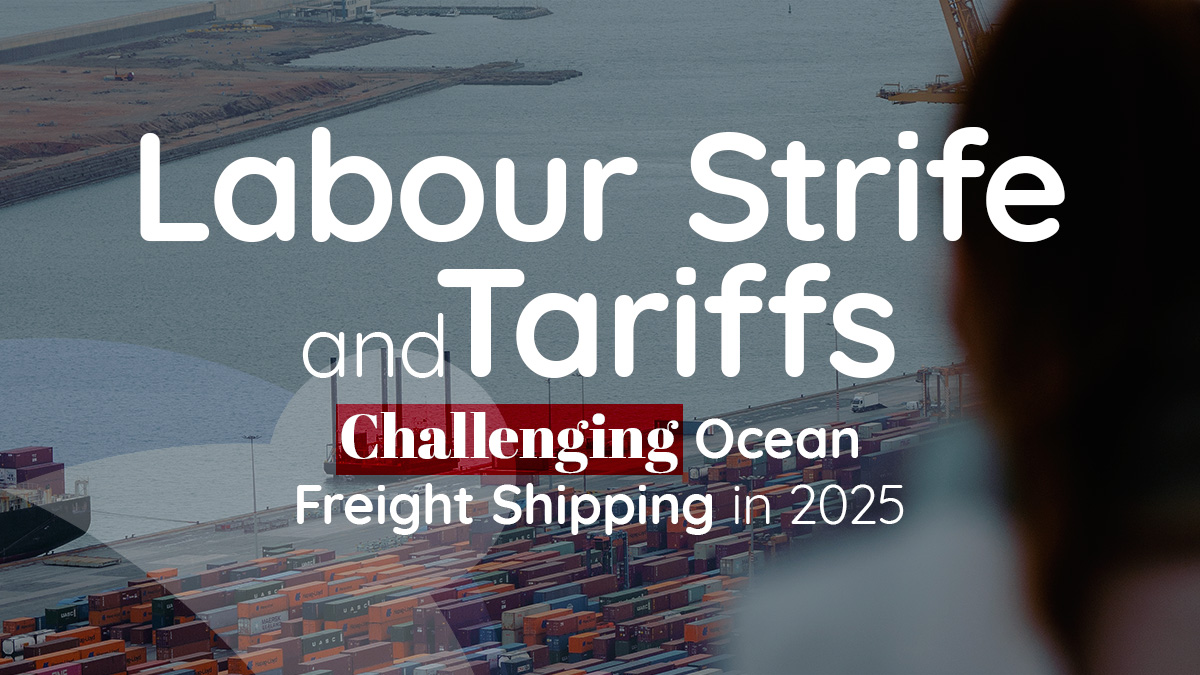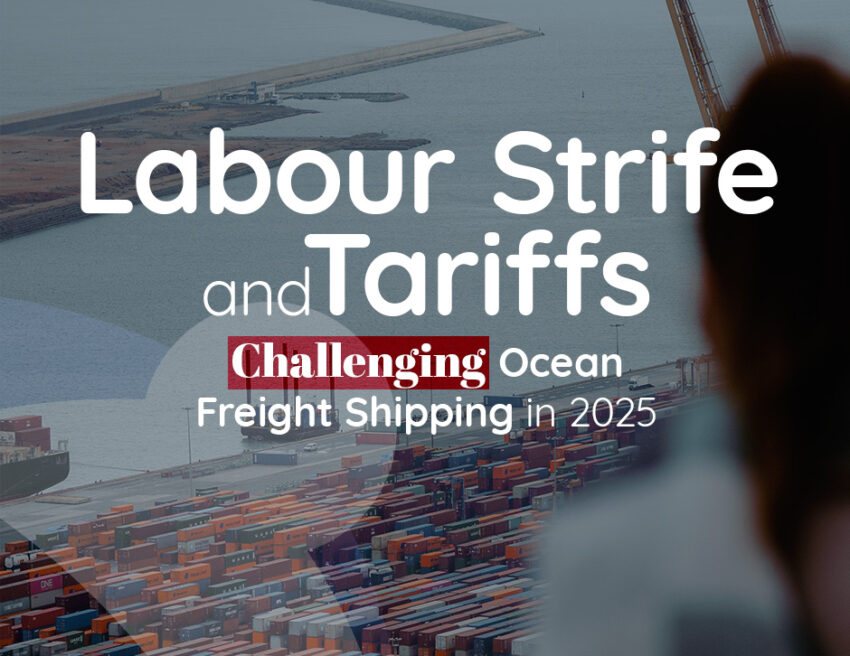The global ocean freight shipping industry is on the brink of a challenging year as it faces multiple headwinds in 2025. Labor disputes, shifting trade policies, and evolving geopolitical factors are set to reshape supply chains and impact global trade. With ongoing negotiations between labor unions and port operators, the risk of strikes and disruptions remains high. At the same time, changes in tariff regulations and trade alliances will force companies to rethink their logistics strategies. As the industry braces for another year of uncertainty, shipping companies and stakeholders must stay prepared for potential delays, increased costs, and operational inefficiencies. The coming months will test the resilience of global supply chains, requiring adaptability and strategic planning to navigate the turbulent waters ahead.

Labor Disputes Threaten Port Operations
As 2025 unfolds, the ocean freight shipping industry faces a storm of challenges, with labor disputes, shifting trade alliances, and evolving tariffs shaping the global supply chain landscape. The sector, already navigating the aftershocks of geopolitical tensions and economic shifts, must now brace for the impact of ongoing labor strife and new tariff regulations.
One of the major concerns for ocean carriers is labor unrest. The International Longshoremen’s Association (ILA) and the United States Maritime Alliance (USMX) are set to resume negotiations on a new contract that affects dockworkers at key ports along the U.S. East and Gulf Coasts. With the expiration of their current agreement approaching, there are fears that a breakdown in talks could lead to port strikes, further disrupting cargo flows. The contentious issue of automation remains a sticking point, as employers advocate for increased efficiency while unions fight to protect jobs. A failure to reach a consensus could spell delays, increased costs, and congestion across vital maritime gateways.
Trade Realignments Reshape Global Shipping
Adding to the ocean freight shipping industry’s complexities, trade realignments are in full swing. Major carrier alliances are undergoing a transformation, with key players restructuring their partnerships. MSC has chosen to operate independently, while Maersk and Hapag-Lloyd have formed the Gemini Cooperation. Meanwhile, THE Alliance has rebranded as The Premier Alliance, featuring Yang Ming, ONE, and Hyundai. These reshufflings will likely cause temporary disruptions as hundreds of vessels adjust their rotations. Experts predict that by mid-2025, the new service arrangements will stabilize, but until then, shippers should prepare for potential inconsistencies in scheduling and routing.
Tariffs Drive Supply Chain Shifts
On the trade policy front, the potential for heightened tariffs under the Trump administration’s second term has already influenced supply chain strategies. Tariffs on Chinese goods, initially imposed during the first Trump administration and later expanded by President Biden, have shifted global trade flows. Mexico has now surpassed China as the top U.S. trade partner, with manufacturers relocating production to Mexico to bypass high import duties. Interestingly, China has responded by increasing its investments in Mexican infrastructure, allowing Chinese goods to enter the U.S. under favorable trade agreements. This shift has altered shipping dynamics, with ocean carriers adjusting routes to accommodate the growing Mexico-U.S. trade corridor.
Port Congestion Remains a Pressing Issue
Port congestion, another longstanding issue, remains a significant challenge in ocean freight shipping. While China’s export volumes continue to rise, the pressure on global ports is mounting. Shanghai, the world’s busiest container port, processed over 40 million TEUs by the end of 2024, contributing to congestion across multiple trade lanes. In response, ocean carriers have implemented blank sailings and revised service schedules, but persistent delays and rising costs remain a concern for shippers.
The Rise of the Dark Fleet
Another looming factor is the rise of the so-called “dark fleet”—a network of aging vessels operating under opaque ownership structures, often linked to countries facing sanctions. This fleet has grown to over 1,400 vessels, raising concerns about maritime safety and regulatory compliance. The International Maritime Organization (IMO) has taken steps to tighten regulations, but enforcement remains a challenge. Additionally, reports of intentional sabotage involving undersea communication cables and energy infrastructure have added another layer of uncertainty to maritime security.
Adapting to an Uncertain Future
Despite these headwinds, ocean carriers have demonstrated resilience by adapting to changing market conditions. The sector has historically found ways to maintain profitability even amid disruptions, and 2025 is unlikely to be an exception. As supply chains evolve and trade policies shift, shippers will need to remain agile, monitoring developments closely to navigate the turbulent waters ahead.


